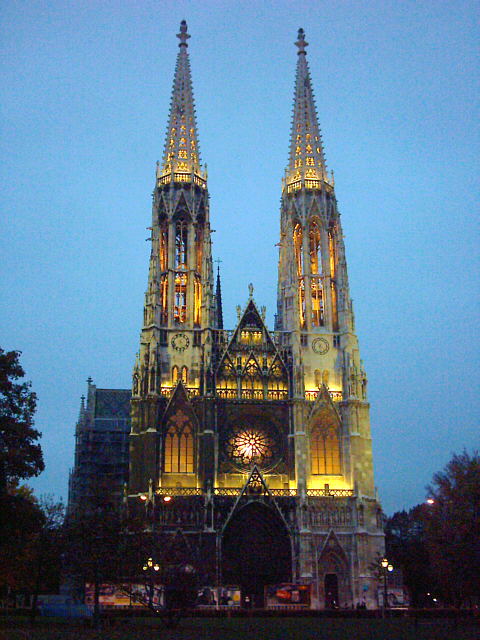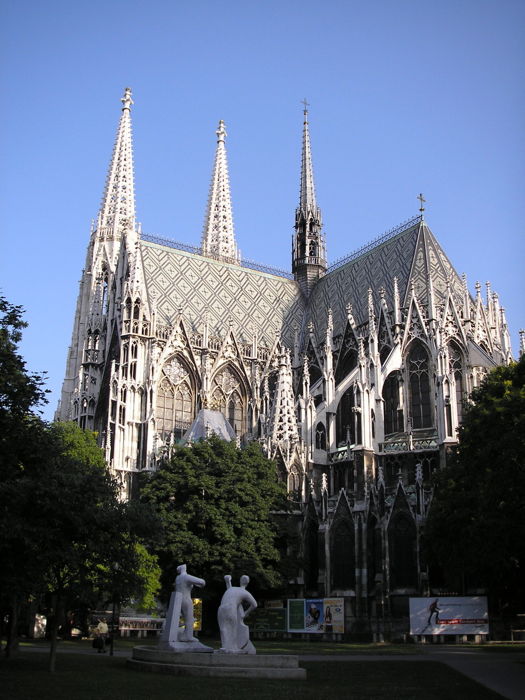Vienna Votive Church, Votivkirche
|
The Votive Church (German: Votivkirche) in Vienna, Austria, is one of the most important neo-Gothic religious architectural sites in the world. Located on Ringstraße in the district of Alsergrund close to the University of Vienna, the origin of the church has an unusual history derived from a knife-attack on Emperor Franz Joseph by Hungarian nationalist János Libényi. The emperor was taking a stroll with one of his officers Count Maximilian Karl Lamoral O'Donnell von Tyrconnell on a city-bastion, when Libényi approached him. He immediately struck the emperor from behind with a knife straight at the neck. Franz Joseph almost always wore a uniform, which had a high collar that almost completely enclosed the neck. It so happened that the collar of his uniform was made out of very sturdy material. Even though Franz Joseph was wounded and bleeding, this collar saved his life. Count O'Donnell struck Libényi down with his sabre.[3] O'Donnell, hitherto a count only by virtue of his Irish nobility, was thereafter made a Count of the Habsburg Empire, conferred with the Commander's Cross of the Royal Order of Leopold, and his customary O'Donnell arms were augmented by the initials and shield of the ducal House of Austria, with additionally the double-headed eagle of the Empire. These arms are emblazoned on the portico of no. 2 Mirabel Platz in Salzburg, where O'Donell built his residence thereafter. Another witness who happened to be nearby, the butcher Joseph Ettenreich, quickly overwhelmed Libényi. For his deed he was later elevated to nobility by Franz Joseph and became Joseph von Ettenreich. Libényi was subsequently put on trial and condemned to death for attempted regicide. He was executed on the Simmeringer Heide. After the unsuccessful attack on February 18, 1853, Franz Joseph's brother Ferdinand Maximilian Joseph, the later emperor of Mexico, called upon the community for donations to a new church on the site of the attack. The church was to be a votive offering for the rescue of Franz Joseph. It was to be "a monument of patriotism and of devotion of the people to the Imperial House". Continued below |

|
|
Votivkirche, Votive Church, Roosevelt Platz Photo 33, 1985 |

|
